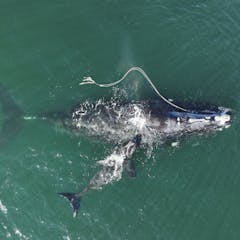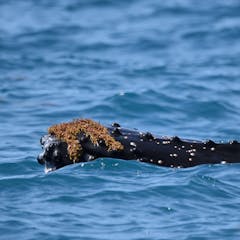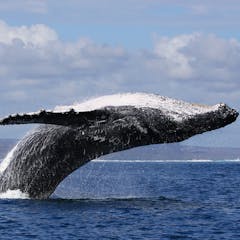
Articles on Whales
Displaying 1 - 20 of 152 articles

The first dedicated scientific surveys have confirmed the presence of blue whales in Seychelles.

Wildlife scientist and whale snot expert Vanessa Pirotta joins us on the first episode of The Conversation’s Curious Kids podcast.

If a new declaration based on customary concepts of tikanga and mana is recognised by the courts, it could potentially give interest groups the legal standing to sue on behalf of whales.

There’s so much we still don’t know about whales. Here’s 3 amazing new things we’ve learnt about whales lately: how humpback whales have sex and give birth – and how baleen whales sing underwater.

Even when female North Atlantic right whales survive entanglement in fishing gear, it may affect their future ability to breed, increasing the pressure on this critically endangered species.

Understanding how the ageing of sperm works in other animals is more important than ever as human male fertility is in decline.

A newly described fossil from South Australia is making waves in our understanding of where and when whales evolved titanic body sizes.

For Australia’s saltwater people, the migration routes of humpback whales represents an important songline

If a whale comes across a patch of kelp, it may well start playing with it. This practice may also be useful to rid whales of unwanted passengers.

You might see the heartbreaking videos of stranded whales and dolphins and wonder why we can’t rescue them. Sometimes we can – but time and tide make it harder

Sadly, the chances of survival for the remaining whales is very low – and time is fast running out.

Our new genomic research finally solves a 150 years of scientific mystery about the unusual and ancient pygmy right whale.

Unusual human-wildlife interactions raise questions about managing the risks. What’s driving these wacky whale antics? How and when should we intervene?

Three debut Australian novels explore diverse territory: the recognisable real world of parental estrangement, and a dystopian near-future where it never stops raining.

We want good news on climate change. But whales storing enough carbon needs more evidence.

The multi-billion-dollar whale-watching industry enables millions of people to see these magnificent creatures up close. But the noise made by so many boats is a threat to whales’ wellbeing.

Ants are skilled surgeons, bacteria have their own internet, and scientists think sperm whales have names.

By analyzing small samples of killer whale fat, scientists can learn about the diets of different killer whale populations. This has implications for our understanding of changing ecosystems.

Food quality, not just quantity, matters when it comes to the health and survival of the southern resident killer whales.

Antarctic minke whales are elusive and hard to track – but a new study of their behaviour offers clues to their evolution and the limits of their filter-feeding behaviour.
